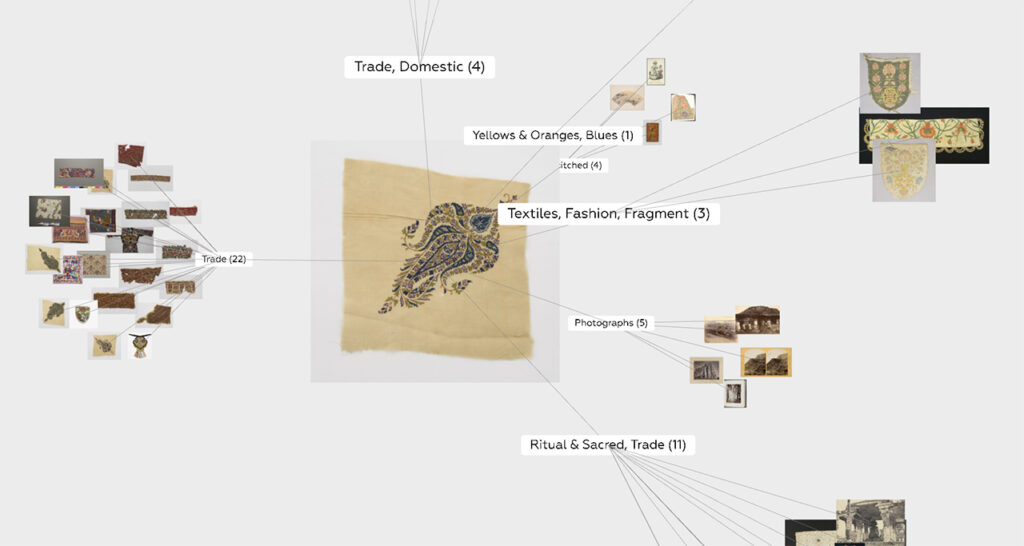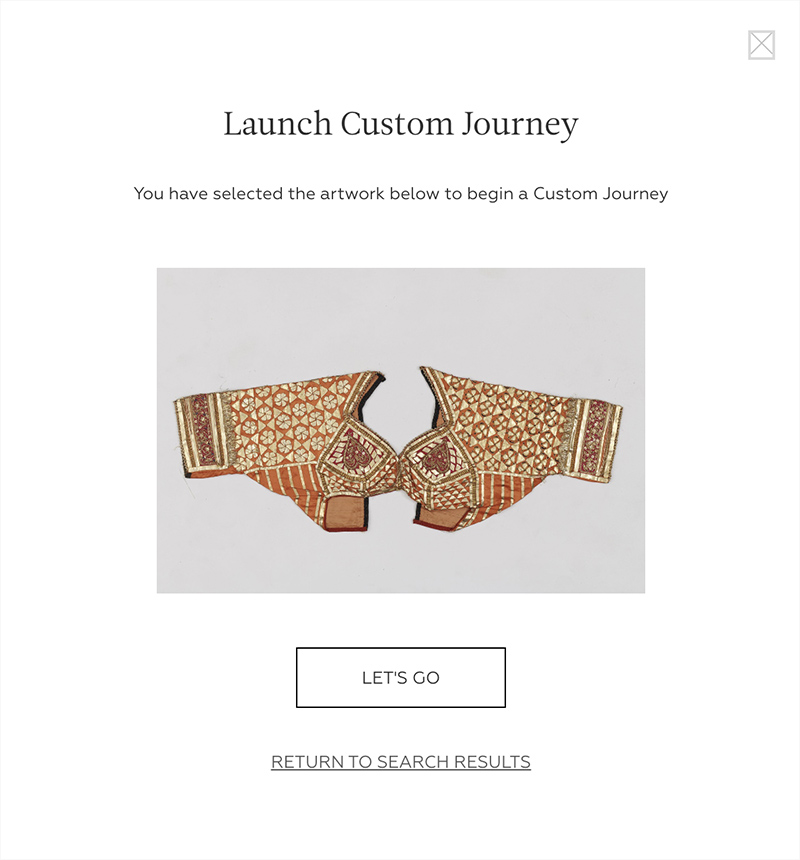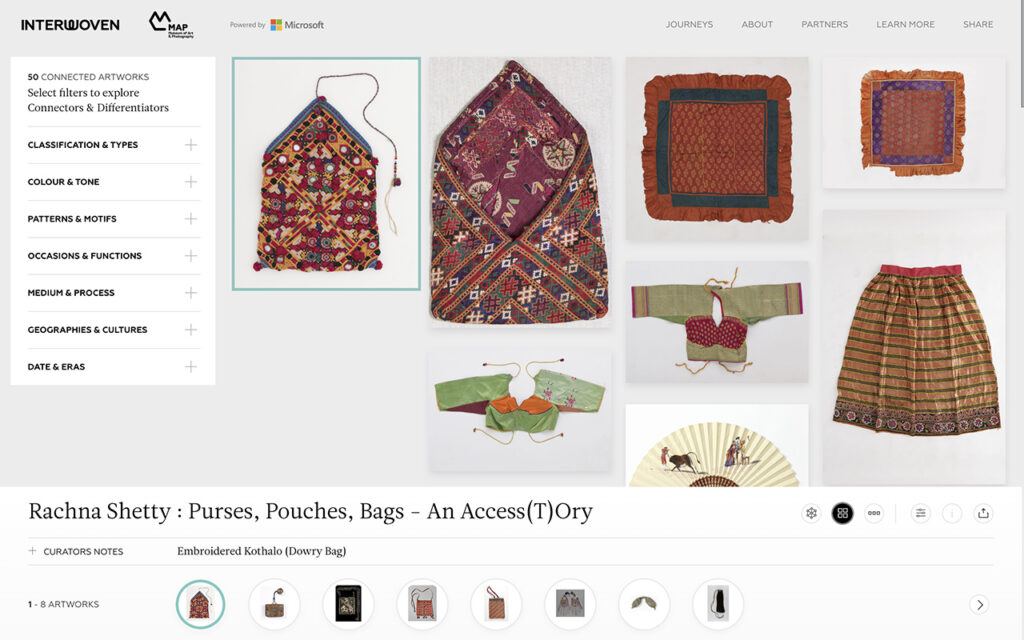In April, when the Museum of Art and Photography (MAP) in Bengaluru launched its virtual encyclopedia, MAP Academy, it signaled a major platforming of Indian art. As part of its central aim, the project gathers long-dispersed and diverse sources of information about Indian art and culture into an accessible, one-stop resource. On it, readers can delve into topics ranging from pre-modern to decorative art in the form of glossaries or clusters, which further open up into articles aggregating knowledge from various digital platforms and cultural institutions.
The domain of Indian art and craft, however, is no silo — its influence reaching far beyond a single geographical area or historical era. Likewise, MAP and MAP Academy intend to forefront the sprawling, age-defying footprint of Indian creativity. With Microsoft’s AI for Cultural Heritage, the Bengaluru institution has launched INTERWOVEN, an AI-powered online tool intended to unravel the connections generated by one of India’s key artistic practices, textiles.
How it works


Using an object from MAP’s collection (above), users can build Custom Journeys through the textile collections of partner museums (top). Images: INTERWOVEN
Driven by discovery, INTERWOVEN digitally unites the textile collections of museums across the world, inviting users to explore their visual, historical, and intuitive connections. To do its work, the platform taps Microsoft’s AI tools, namely Azure Custom Vision and AI Text Analytics, which were devised and deployed by creative agency A_DA, to help locate common threads between MAP’s textile holdings and the Open Access collections of its partners. “You can see the journey of textiles not just through motifs and designs,” per Microsoft, “but also through filters of color, occasions, geographies, and eras, among others.”
Two routes into INTERWOVEN are offered: Curated Journeys, featuring specialist-created thematic collections (women’s attire, personal style objects, for example); or Custom Journeys, wherein visitors can build their own web of connections using a textile object from MAP’s collection as a starting point.
With the latter, users can begin their journey with, say, a Kashmir shawl fragment to launch a web of connections as diverse as a glass-beaded purse from the 1800s, a farmhouse in Chosan, Korea, and a pigmented wall fragment from 1st century Rome. These other artifacts are variously pulled from the archives of 16 partner museums, including the Metropolitan Museum of Art, Harvard Art Museums, the Smithsonian, and the Victoria & Albert Museum.
Why it matters

Created by specialists at MAP Academy, Curated Journeys offer visitors themed journeys through textile art and history. Image: INTERWOVEN
As Shrey Maurya, Managing Editor of MAP Academy and a knowledge partner at INTERWOVEN, put it, the platform “helps foster and sustain interest in textiles and art.” And true enough: the project may be of casual interest to the layperson, but too, will potentially be of use to academics, curators, and historians to further the cultural understanding and shared histories of textile objects.
The use of AI, while furthering Microsoft’s mission to tech-enable the cultural sector, once more highlights the technology’s emergent role and potential within cultural organizations. Already, AI is being used by museums around their digital collections for the purposes of object detection or image classification. But here, INTERWOVEN centers AI as a tool for engagement, offering users, whether casual or academic, fun and intuitive routes into online archives.
What they said
“India has been a melting pot of cultures and an epicenter of global trade for centuries. It’s exciting to see how INTERWOVEN, our first AI for Cultural Heritage project to come out of India, reminds us both of the vibrancy of different cultures and how these traditions are shared in a conversation across time and place.” — Brad Smith, President and Vice Chair, Microsoft
“Here, you’ll never look at an object in isolation. The moment you select anything on the platform — even a stray motif on a textile patch — the algorithm will automatically show you all the connections it has around the world.” — Shrey Maurya, Managing Editor, MAP Academy



